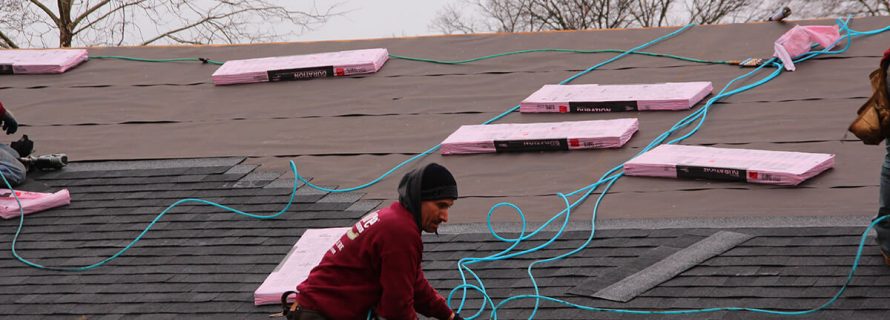Extend the life of your roof

Replacing your roof isn’t something that you want to do regularly. Although sometimes time or extreme weather can ravage a roof, most people want to make sure that when they install a new one it won’t be going anywhere. New shingles should last, protecting your home from the elements day in and day out for decades. Alure Home Improvements’ exterior design expert Mike Serra told homeowners a few different ways to keep their replacement roofs working for them for as long as they need.
Use architectural shingles and a certified installer
Serra advised homeowners to stay away from 3-tab shingles. This once-popular roofing material came in a single sheet that was cut before being put down. This allowed water to get between the sheets over time and cause structural damage. Instead, Serra recommended using 2-ply architectural shingles.
Two-ply architectural shingles are laminated and offer better protection from rain, water and wind. Companies such as Owens Corning and GAF have great options, Serra said, and are particularly beneficial to homeowners because of the warranties offered. Manufacturers certify installers that they approve of to let homeowners know that the company will install the shingles to their optimal effectiveness. For example, when your home has Owens Corning shingles installed by a platinum installer, Owens Corning gives you a 50-year warranty for full replacement, including labor, installation and materials. It’s even transferable when the house is sold or passed down. Serra explained that when you have a warranty like that, you’ll likely never have to think about roofing on your home again.
Install ventilation
One of the most common ways that roofs can become damaged is through water damage due to cracked, curled or missing shingles. Often, the cause of this shingle damage is due to overheating, which can exacerbate the aging process. Serra recommended homeowners add a ventilation system while having their roof replaced.
“Ventilation is key,” Serra said in an interview. “You need air movement in your attic mainly because it’ll keep the attic cooler. That cools down the asphalt shingles from below and stops them from drying out.”
There are two vents that are installed. The first is at the peak of the roof to let air out. These are designed to prevent water from getting in as well. The second vent is in the soffit. Through the simple physics principle of heat rising, the attic will naturally cool itself, sucking cool air from outdoors and expelling hotter air through the roof’s peak.
Have the proper underlayments
One of the best ways to prevent extreme weather, ice or other elements from ruining your roof is to install reliable underlayments.
“There’s an underlayment called rain and ice shield that plays a real key role today,” Serra said. “It really reduces the chance of water coming in in extreme conditions.”
The shield is a rubber membrane that goes under the shingles and prevents the ice or water that builds up under your shingles from getting into your home by creating a seal around the nail head. It adds an extra layer of protection to this important exterior structure.
- Additions and New Construction
- All Exteriors
- Alterations
- Basements
- Bathrooms
- Customer Service
- Customer Stories
- Decks
- Design & Planning Show
- DIY
- Doors
- Educational Resources
- Extreme Makeover Home Edition
- Fashion Show
- General Remodeling
- Green Living
- Handyman Home Services
- Home Decor
- Home Entertainment
- Home Improvement
- Home Improvements
- How to Tips
- In The Community
- Kitchens
- Off-the-Wall Remodeling Stories
- Remodeling
- Resources
- Roofing
- Siding
- Social Media
- Sunrooms
- Tips & Tricks
- Trends
- Windows

